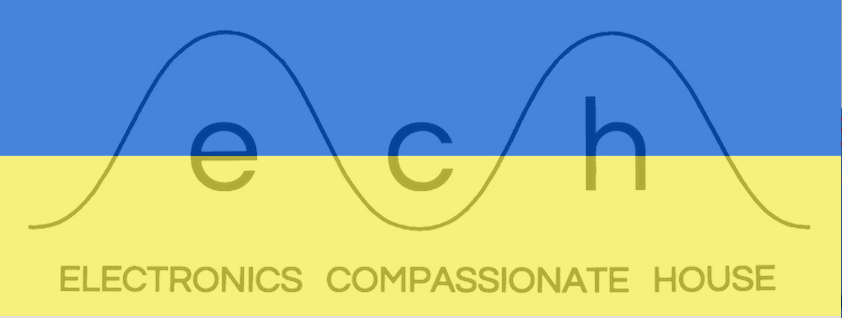 |
| Roland Space Echo Re-150 Motor disassembled |
Following my recent piano-style repairs I was asked to attempt a motor rebuild for a ROLAND SPACE ECHO RE-150. A local music shop had one and I was happy to try, being a long time user and abuser of my own (borrowed in 2004) RE-201. The symptoms were bad WOW and FLUTTER, failure to erase the previously recorded signal thus leaving "ghost" performances on the tape like a wonky 'Frippertronics'/Terry Riley rig, a terrible screeching periodically coming from some moving part, no echo feedback, poor tone, etc... Not in good shape despite being beautiful on the outside. The casual consensus was "motor dying" and I agreed to take a look-see.
I
traced the screeching to the motor by eliminating other moving parts. I
decided to replace, if possible, the motor bearings since the screech
reminded me of the sound small DC motors make when run too hard
or run over-voltage and suggested dried or seized bearings.
The SPACE ECHO
uses a very specific brushless motor made (usually) by Pioneer and it
can only be found in used machines, but bearings can be purchased from ECHO FIX in
Australia. He also provides full service kits, new tape, and motor repair services.
The RE-150 (at least this one) has a slightly
different motor than most of the product line. The/this RE-150 has two of the brass lower bearings found in the RE-201 rather than an upper bearing similar to the tape-path
bearing (a 5x13x4 skateboard bearing). When I removed the motor from its
protective case I could pull the shaft out of the coils immediately
(nothing but magnetism holding it in place). I cleaned and lightly oiled
the shaft which showed some signs of wear and cleaned inside the brass
sleeves. I cleaned and refreshed the grease under the flywheel and
reassembled. The screeching was gone, at least for now and I hope for some time to come. I asked ECHO FIX about the bearings and he promptly replied, but I
decided against ordering when I had good results with cleaning and
lubrication. I ran the unit for several hours at different speeds and the screeching sound never reoccurred.
It did, however, continue to display all the other negative symptoms. That wasn't a surprise as the eye revealed a sad history of neglect. This echo came to me with the original cleaning kit with all parts intact - i.e. it had never been cleaned.
The felts were clearly filthy so I flipped those over lacking replacement felt. I ended up using double layers of 1/16" piano felt to make new "cleaners" (the two pieces of felt that clamp the tape as it exits the heads, before the pinch roller) and this worked well. Replacement kits are available.
I cleaned the entire tape path including the heads. There was light dirt but most of the grime had accumulated on the cleaner felt.
It still wobbled so I lubricated the pinch roller shaft and checked the bearing in the tape path right after it leaves the tape maze. The bearing was smooth and spinning.
I changed the tape loop(I had a spare on hand for my own unit) and this helped as one would expect (the grime on those felts was degraded tape dust) but it was still fluttering and ghosting. Even so, the new tape was much longer than the one removed and had a nicer splice and things were getting better for sure!
The pinch roller seemed dry and harder than you might like but not too bad. Not gunky anyway. I tried the roller from my own working unit and heard no improvement so I put the original back in. I advised the shop to get a new roller if they wanted to.
The pinch roller tension when the unit was on seemed light. I removed the solenoid underneath that pulls the roller over and polished the shaft. A solenoid can weaken with time, they say, and this one is latched the whole time the machine is on (unless you use the foot pedal to turn it off). I cleaned the inside sleeve and there was some grime. Upon reassembly there was more traction between roller and capstan and most of the flutter was gone.
I adjusted the tension of the felts slightly, first testing by hand, and found it was now quite steady. Too little tension in the spring on the bearing side will mean loose contact between the tape and the heads resulting in poor echo. Too much tension will cause flutter as the tape strains to pull through.
I then adjusted the heads using the layout provided in the original manual. I found two of the heads still "locked" with lacquer from the factory and two "movable" ones. I wasn't shy, I cracked the wax and found the best alignment for tone and feedback for each head.
It was now very nearly a brand new SPACE ECHO!!
It still had a slight tendency to slur a little bit at its lowest speed. Slight adjustments to the tape path under the clear cover to account for the missing tape box that original stock came in (as diagrammed on a silver sticker) were made and I then put all the screws back in. A new roller and factory felt would make it mint and I believe there are many years left in the unit. All the electronics, including
capacitors looked and worked fine (I did not recap the motor control circuitry as this problem had clear physical causes) and the external condition was lovely.
$20 for the tape, + 2hrs bench time = Echo back from the dead!
